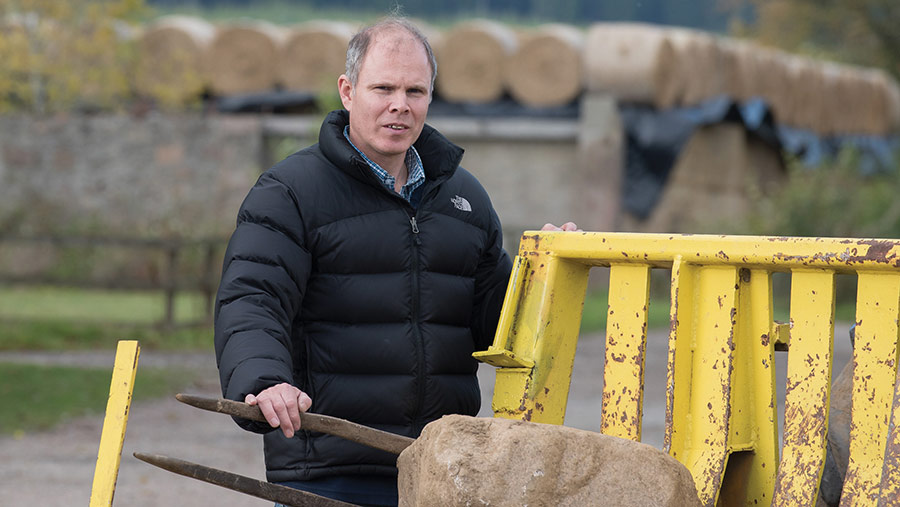Farmer Focus: First winter barley min-tilled after cover crop
 © Angus Findlay
© Angus Findlay The weather in August continued to be unsettled right to the end, with only 12 days without rain in the month.
September has been much better, with a run of 10 dry days allowing harvest to progress at a more normal pace.
We ended up cutting all of the wheat by 4 September, about the time we started it last year, and Golden Promise barley was completed a couple of days later.
See also: How arable farmers can introduce SFI 2023’s no insecticide option
By this stage, glyphosate had been applied to Laureate and Diablo long enough to even up the late tillers and allow the combine to move onto these varieties.
The better weather, along with some demo combines, have ensured good progress over the past couple of weeks at mostly low moistures.
As a result, tipping space at the grain store has been at a premium, with each crop and variety having to get through the dryer and moved off farm to allow the next one to come in.
Wheat performed well, with varieties Dawsum and Insitor being a step on from Skyscraper and Saki, with their bushel weight also being better.
Malting barley is achieving satisfactory quality, although there is a long way to go until it is all harvested and delivered, so hopefully this is maintained in the late-drilled fields.
Autumn drilling has got off to a good start, with OSR establishing well and winter barley and wheat drilling now progressing in idea conditions.
For the first time we have put in winter barley by min-till after a cover crop, so will watch with interest how this block compares with our conventional plough-based system.
We have trialled a couple of tractors recently, as we have a contract hire agreement coming to an end next year.
With inflation and high interest rates, it looks like this will be a costly change and we may have to look to alternative options rather than just doing the same again.
With current market prices and uncertainty in government policy, committing to long-term machinery investment is a big gamble.
We need to be able to budget on making enough return, preferably from grain production, but backed up by environmental support schemes to show a return on such significant investment.


